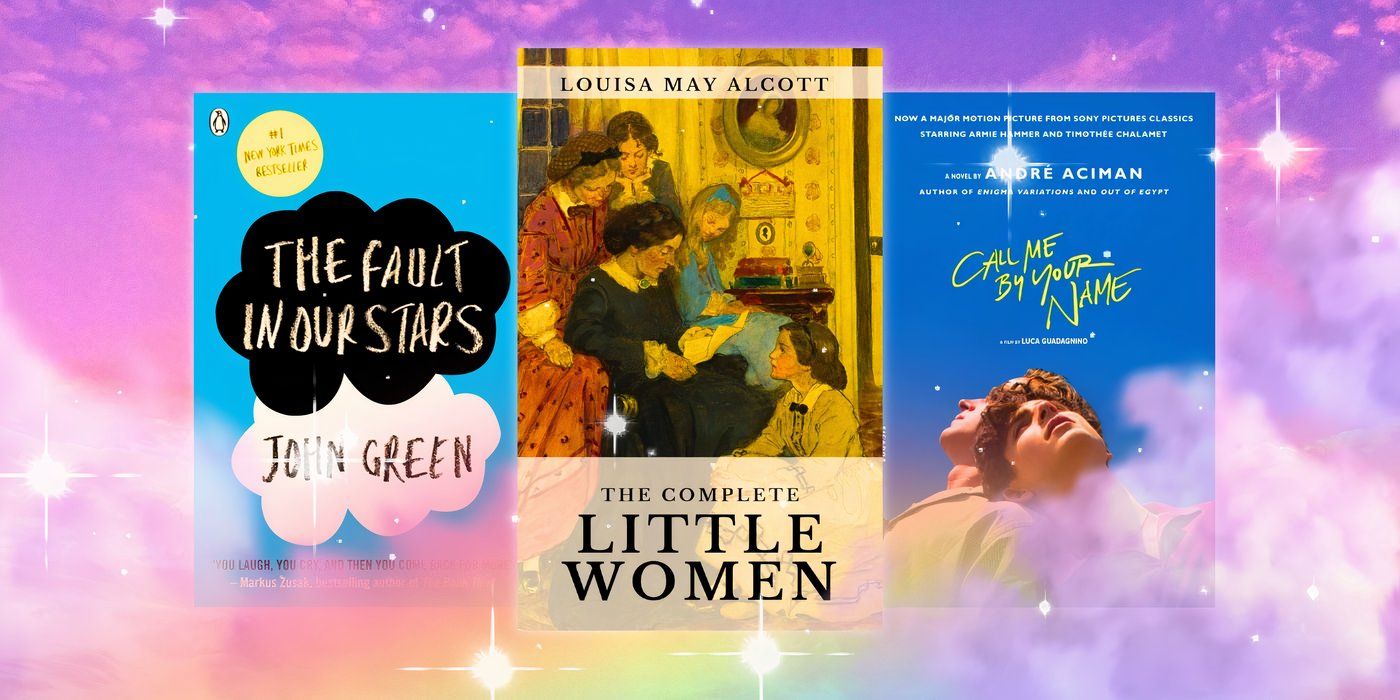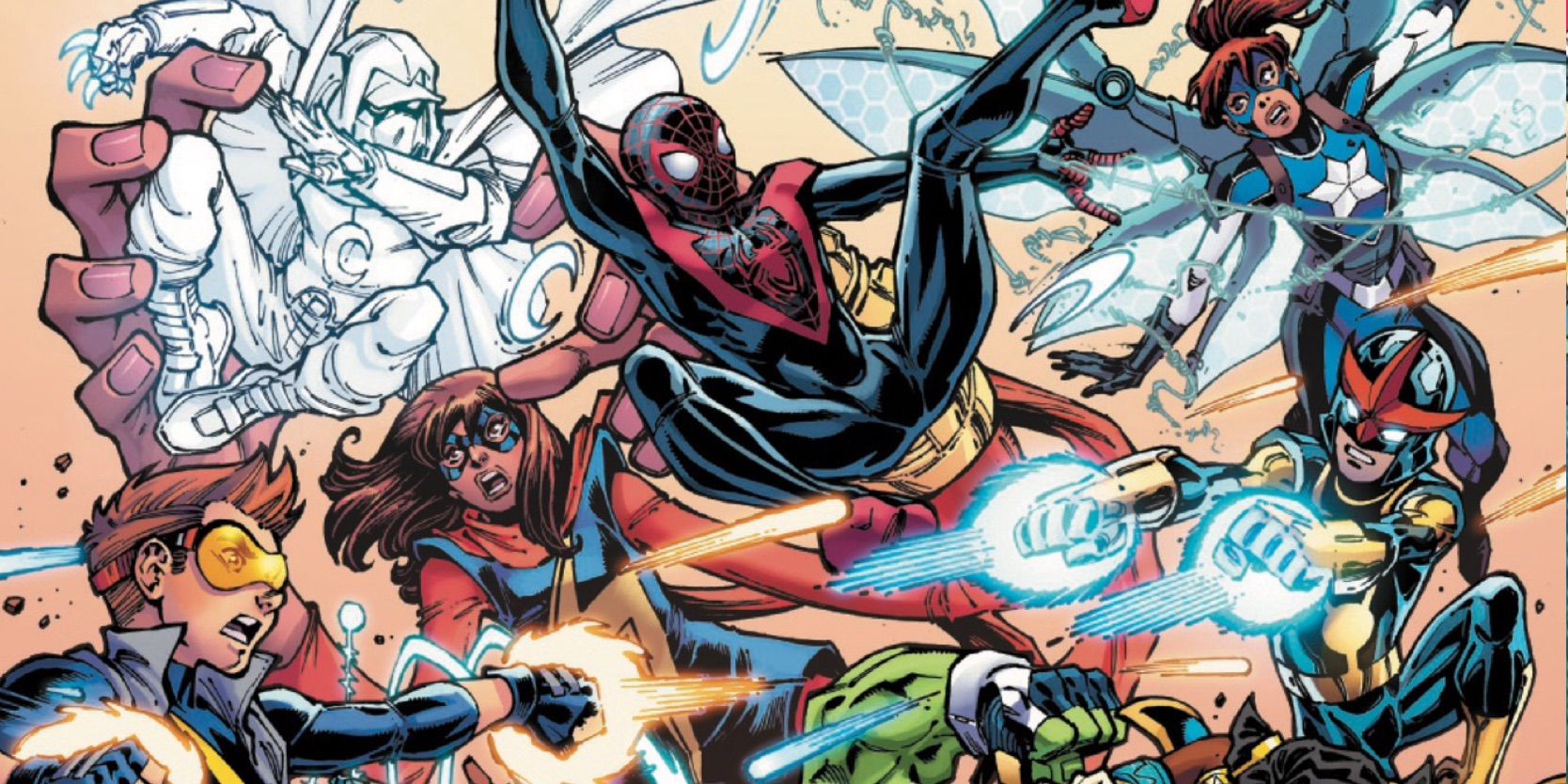10 Timeless Coming Of Age YA Novels That Readers Still Return To (& Why)
Summary Timeless YA novels explore universal themes like love and self-discovery that resonate with readers of all generations.
Stories like "Perks of Being a Wallflower" and "Bridge to Terabithia" tackle complex emotions and friendships in relatable ways.
"The Fault in Our Stars" and "To Kill a Mockingbird" offer poignant reflections on life, love, and societal issues, timeless in their impact.
Coming-of-age, young adult novels have remained one of the most popular novel subgenres, and there are several titles that readers have returned to time and time again. Because of the popularity of books adapted into movies and TV shows in recent years, many readers have been reminded of their favorite timeless books and decided to read them once again. Timeless novels invited readers into a world and story that was so endearing that it was hard to put the book down and easy to re-read numerous times.
Many timeless novels used language and themes that transcended time and were relevant to any generation. No matter how many years passed, these titles resonated with readers long after their initial publication. With universal themes of love, friendship, self-discovery, empowerment, and everything in between, timeless coming-of-age, young adult novels have stuck in the hearts of readers for years.
10 Perks Of Being A Wallflower
Stephen Chbosky – 1997
Stephen Chbosky’s 1999 title, The Perks of Being a Wallflower, was a huge hit before and after the book was adapted into a movie. Although it was well received, The Perks of Being a Wallflower’s movie and book differences were noticeable. The novel’s engaging protagonist, Charlie, and his story about fitting in at high school as he battled mental health issues were deeply profound yet heartwarming. With each chapter formatted like a letter, Charlie’s journey navigating relationships, new friends, and his past trauma invites readers to understand the darker aspects of adolescence.
The Perks of Being a Wallflower’s ending was hugely shocking but also made a lot of sense, which was one of the main reasons that the book was so re-readable. Understanding what happened to Charlie with his Aunt made readers want to pour back over the text straight away, picking up on the little details that hinted at his abuse littered throughout. Outside of the heartbreaking topics, however, the novel also highlighted the importance of true friends and how love can come in many forms.
9 Are You There God? It's Me Margaret
Judy Blume – 1970
Are You There, God? It's Me, Margaret was published in 1970, but readers have continued to pick up Judy Blume’s hit novel repeatedly. Margaret Simon’s experiences were incredibly relatable as she made her way through her teenage years feeling out of place. Although there was a focus on relationships and friends, Margaret’s biggest difficulty was her lack of religious affiliation because of her parents’ interfaith marriage. Margaret’s feelings of not fitting in with Judaism or Christianity were a metaphor for life in general and how a label could offer a sense of security.
Another brilliant quality of both the book and movie Are You There, God? It's Me, Margaret was how it tackled the topic of menstruation and puberty for females. The connection between Margaret’s faith and her growing up was a primary theme throughout the novel. However, Margaret’s search for a higher power to speak with her was never about religion or God; it was about her seeking out somewhere to belong. Margaret remained undecided on her faith, but the lack of conclusion over the subject represented her life: unclear but full of potential.
8 Bridge To Terabithia
Katherine Paterson – 1977
While released as a classic kid's book, Katherine Paterson’s Bridge to Terabithia contained a story and elements that were applicable to readers of any age. The book followed the authentic friendship between Jess Aarons and Leslie Burke in their imaginative fantasy kingdom of Terabithia, which they used to distract themselves from the problems in their lives. Being King and Queen of Terabithia allowed Jess and Leslie a break from reality, bullies, and their families. However, one heartbreaking event recentered the narrative and introduced a haunting theme.
Leslie’s death in Bridge to Terabithia’s movie was just as shocking in the novel. The book beautifully tackled grief as Jess struggled to decipher his best friend’s fate and asked his father whether Leslie was in Hell or not. Leslie’s death forced Jess to confront his emotions and acknowledge the complexities of life, which was a deeply moving and relatable story. The mix of imagination and reality was a fascinating combination but also allowed for a wholesome yet bittersweet read.
7 The Fault In Our Stars
John Green – 2012
The Fault in Our Stars by John Green was a huge hit when it was originally published in 2012 and has continued to be one of the most-read books of all time. Its film counterpart, released in 2014, was one of several movies and TV shows based on John Green's books and brought Hazel’s journey with terminal illness to the silver screen. Hazel’s battle with cancer led her to a support group where she met Augustus, and as the book progressed, she fell in love with the osteosarcoma survivor while trying to manage her deteriorating health.
The Fault in Our Stars’ morbid storyline was made surprisingly light-hearted by Hazel and Augustus’ evergrowing bond. Despite its heavy themes, the book did a brilliant job of translating philosophical questions about life and death to the page in an accessible way. Although not every reader was able to relate to their particular struggles, the different ways Hazel and Augustus tackled life and made the most of the unknown amount of time they had was a widely understandable quality. The Fault in Our Stars’ ending, while heartwrenching, provided hope and taught readers to embrace every day.
6 Little Women
Louisa May Alcott – 1868 and 1869
Little Women by Louisa May Alcott, widely regarded as one of the first pieces in the YA genre, was published in two volumes in 1868 and 1869. Over the years, every Little Women adaptation recreated the core story of the novel, which follows the story of the four March sisters – Meg, Jo, Beth, and Amy. Each sister had their own subplot that discussed topics of love, friendship, sacrifice, and ambition, to name a few. Despite Little Women’s release in the mid-1800s, the book has an overarching appeal to every generation of readers.
Little Women’s popularity can be attributed to the differences between the four sisters. Although their priorities differed, the women all served as role models in some way. The book was set during the American Civil War, and it focused heavily on the treatment of women and how the March daughters navigated such a world. Ultimately, the common link between the characters was the pressure of growing up, something every reader experienced. Regardless of how society changed, Little Women remained relevant in every era.
5 Call Me By Your Name
André Aciman – 2007
André Aciman’s Call Me by Your Name recalled the captivating tale of blossoming love between Oliver and Elio. Despite their initial differences, their summer in Northern Italy brought the pair together and launched a relationship. Call Me by Your Name’s fascinating introspective into sexuality and the boundaries of love played a significant part in the success of the LGBTQ+ book, especially because of the lack of a happy ending. Elio and Oliver viewed their relationship in very different ways. Although Elio rejected Oliver’s advances, he never denied his feelings, which made him a complex character.
The themes of personal identity and desire were massively impactful in Call Me by Your Name. Elio’s narration as he got older and his relationship with Oliver disintegrated was bittersweet. Still, Elio’s character development as the novel progressed highlighted a more important message – time may change, but feelings do not. Oliver and Elio's budding romance transcended time, and although they didn’t end up together, they always had that summer in Italy. Again and again, readers relived their vacation together and favored the book, even though Call Me by Your Name’s movie ending differed greatly.
4 The Catcher In The Rye
J. D. Salinger – 1951
The Catcher in the Rye’s movie adaptation never happened, which was surprising, considering the success of the J.D. Salinger novel. The Catcher in the Rye was led by the defining teenage rebel Holden Caulfield and told a story of sexual obsession and depression. Holden’s honesty made him an endearing protagonist, especially his disdain for “phonies,” which he vocalized repeatedly throughout the book. Holden’s critique of societal norms resonated, and although society has changed since the novel’s publication, it was applicable in many different contexts. While Holden hated the world around him, his Achilles heel was his sister, Phoebe.
Phoebe's influence allowed for a softer side of Holden, one that wasn’t permanently angry and frustrated with authority. Holden’s vulnerability was a core reason why The Catcher in the Rye was so engrossing, especially because he constantly flipped between throwing himself into sexual exploits while trying to maintain Phoebe’s childhood innocence. The Catcher in the Rye’s use of language, while a product of its time, was inventive and added more depth to Holden’s character, too. Although the novel was cemented in the 1950s, its themes of turmoil and estrangement made The Catcher in the Rye a timeless read.
3 To Kill A Mockingbird
Harper Lee – 1960
Harper Lee's To Kill a Mockingbird was an instant success after its 1960 release. The novel quickly became known for its use of humor to lighten its narrative, which tackled some incredibly dark topics, including sexual assault and racial inequality. To Kill a Mockingbird became an integral part of American literature because of Scout’s childhood view of a heartless world. However, To Kill a Mockingbird was also massively ahead of its time. The primary plot focused on Tom Robinson's trial and how the justice system failed him, despite Scout’s lawyer father proving his innocence.
To Kill a Mockingbird examined the mistreatment of people of color and how one dangerous lie spiraled, all through the eyes of a young girl. The term “don’t judge a book by its cover” was massively relevant in To Kill a Mockingbird in several ways and an important lesson that was applicable to all situations in reality. The exploration of prejudice, especially toward Boo Radley, remained important throughout the generations after its publication. Its unique take on the topics through Scout’s eyes provided a new angle on an over-exhausted subject, but one that has continued to be crucial in society.
2 The Sisterhood Of The Traveling Pants
Ann Brashares – 2001
The Sisterhood of the Traveling Pants, the first installment of the book and its movie series, followed the adventures of four best friends and a mystical pair of jeans that magically fit them all despite their varied sizes. Throughout their summer, Lena, Tibby, Carmen, and Bridget passed the item of clothing back and forth. While each of the girl’s stories was different, they covered important and relatable themes. Lena and Bridget’s relationship woes, Tibby’s grief, and Carmen’s struggles with her father were all fascinating journeys and highlighted the positive qualities and flaws of each character.
Ultimately, the one core connection between the girls was empowerment. The backdrop of each of their summers was diverse, but how they felt wasn’t. Regardless of their specific situation, the girls were forced to be resilient and made readers frequently laugh and cry, sometimes within the same chapter. While its title implied that the pair of jeans would be the main focus of the novel, The Sisterhood of the Traveling Pants’ symbolic clothing truly represented the girl’s solidarity for one another in tough times and how their friendships supported one another, even if they weren’t physically at each other’s sides.
1 The Curious Incident Of The Dog In The Night-Time
Mark Haddon – 2003
Despite being a mystery novel, The Curious Incident of the Dog in the Night-Time also became a big hit in the YA genre for its compelling plot, which focused on Christopher Boone, a neurodivergent 15-year-old. Christopher’s unique perspective made him a brilliant narrator throughout the novel, throwing himself into an intense investigation that revealed shocking details about his supposedly late mother and his local neighborhood. Knowledge of neurodivergency wasn’t very prominent in 2003, but parts of Christopher’s narrative were relatively accurate, and author Mark Haddon acknowledged his lack of understanding of the spectrum.
Regardless of Christopher’s labels, his story pulled readers in with two mysteries: the death of Mrs. Shears’ dog and the final days of Judy Boone’s life. Readers were invested in Christopher’s growth and development as he got caught up in emotional confrontations. Christopher persevered despite several heartbreaking revelations along the way, and his determination was relevant for many. The book’s themes of complicated family dynamics and navigating a world that rejected anybody different were crucial in The Curious Incident of the Dog in the Night-Time’s success and made it a binge-worthy read.











COMMENTS